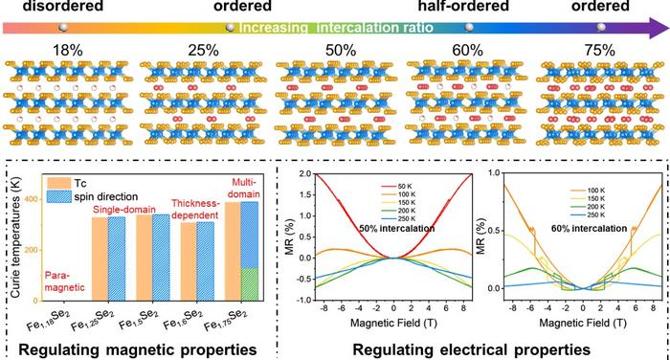Bioengineer
1d
167

Image Credit: Bioengineer
Intercalation Influences Chemical Arrangement and Properties in Two-Dimensional Magnets
- Advancements in 2D material manipulation have led to new material science possibilities, notably with self-intercalation of metal atoms into transition metal dichalcogenides.
- Manipulation of intercalation ratios significantly impacts atomic structure and physical properties of materials like iron selenide (Fe1+xSe2).
- Researchers at Peking University demonstrated how slight intercalation ratio changes affect atomic ordering and properties in Fe1+xSe2.
- Self-intercalation inserts additional Fe atoms into TMDs' van der Waals gaps, creating new materials with enhanced properties.
- A systematic approach to intercalation revealed relationships between intercalation ratios, atomic structures, and magnetic behaviors.
- Experiments showed varying Fe1+xSe2 compositions resulting in disordered, half-ordered, and fully ordered structures based on intercalated forms.
- Innovative methods like space confinement-assisted chemical potential regulation provided precise control over intercalation levels.
- Magnetic property changes were observed in synthesized materials based on intercalation states, affecting magnetoresistance behaviors.
- Atomic structure manipulation through intercalation led to the creation of new materials with tunable structural and magnetic traits.
- This research paves the way for designing next-generation materials with tailored properties, promising applications in electronics and spintronics.
Read Full Article
10 Likes
For uninterrupted reading, download the app